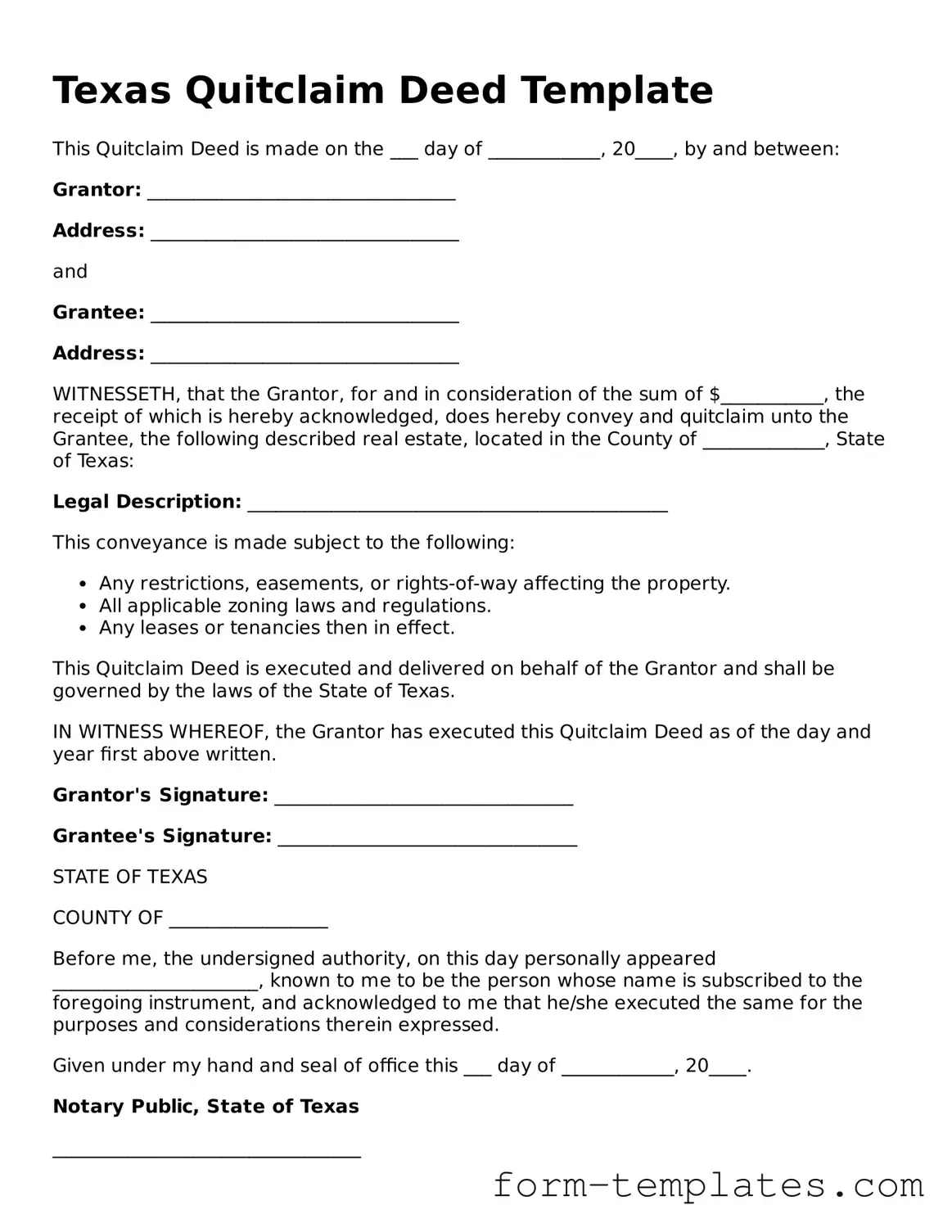Texas Quitclaim Deed Template
This Quitclaim Deed is made on the ___ day of ____________, 20____, by and between:
Grantor: _________________________________
Address: _________________________________
and
Grantee: _________________________________
Address: _________________________________
WITNESSETH, that the Grantor, for and in consideration of the sum of $___________, the receipt of which is hereby acknowledged, does hereby convey and quitclaim unto the Grantee, the following described real estate, located in the County of _____________, State of Texas:
Legal Description: _____________________________________________
This conveyance is made subject to the following:
- Any restrictions, easements, or rights-of-way affecting the property.
- All applicable zoning laws and regulations.
- Any leases or tenancies then in effect.
This Quitclaim Deed is executed and delivered on behalf of the Grantor and shall be governed by the laws of the State of Texas.
IN WITNESS WHEREOF, the Grantor has executed this Quitclaim Deed as of the day and year first above written.
Grantor's Signature: ________________________________
Grantee's Signature: ________________________________
STATE OF TEXAS
COUNTY OF _________________
Before me, the undersigned authority, on this day personally appeared ______________________, known to me to be the person whose name is subscribed to the foregoing instrument, and acknowledged to me that he/she executed the same for the purposes and considerations therein expressed.
Given under my hand and seal of office this ___ day of ____________, 20____.
Notary Public, State of Texas
_________________________________
My Commission Expires: ___________
